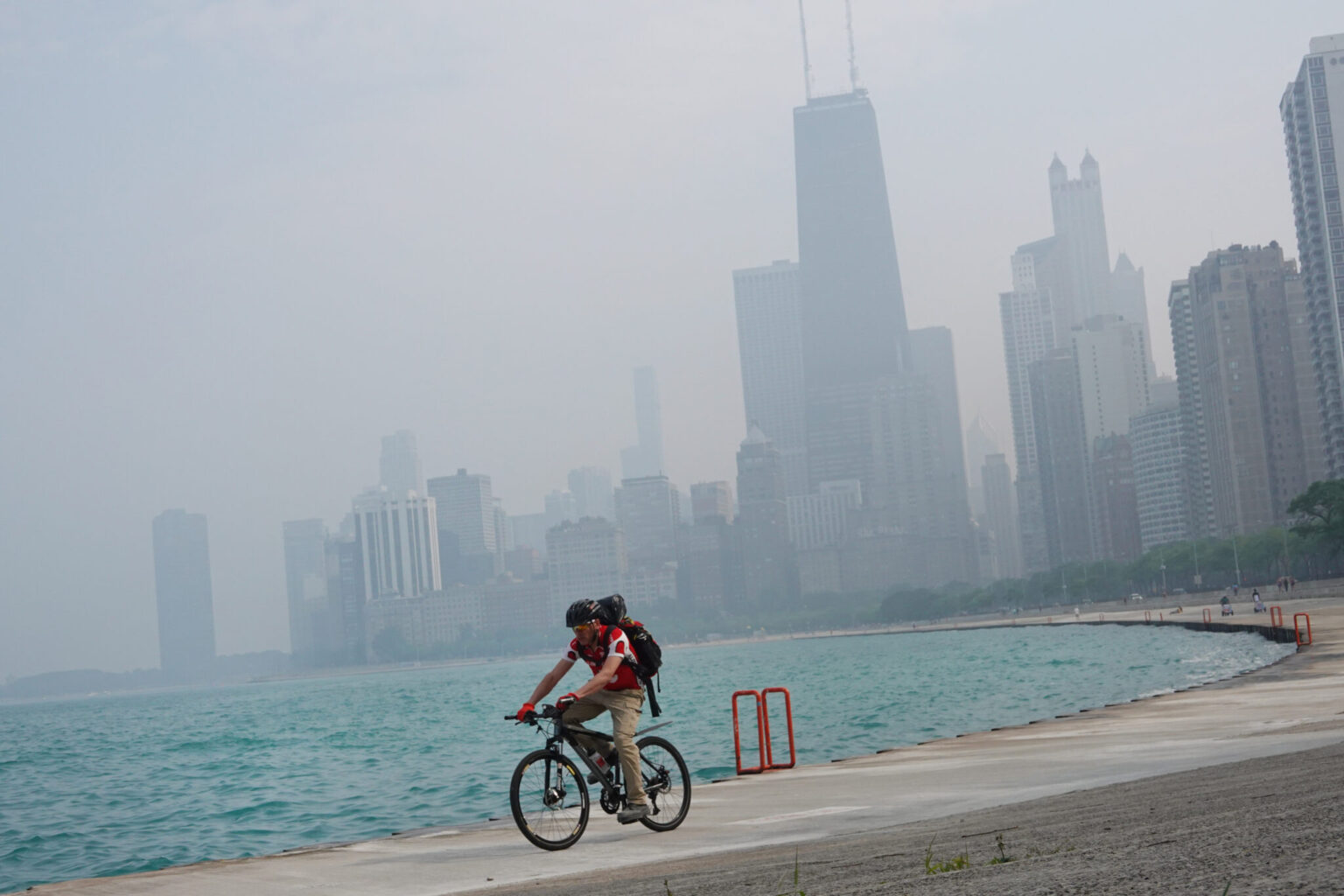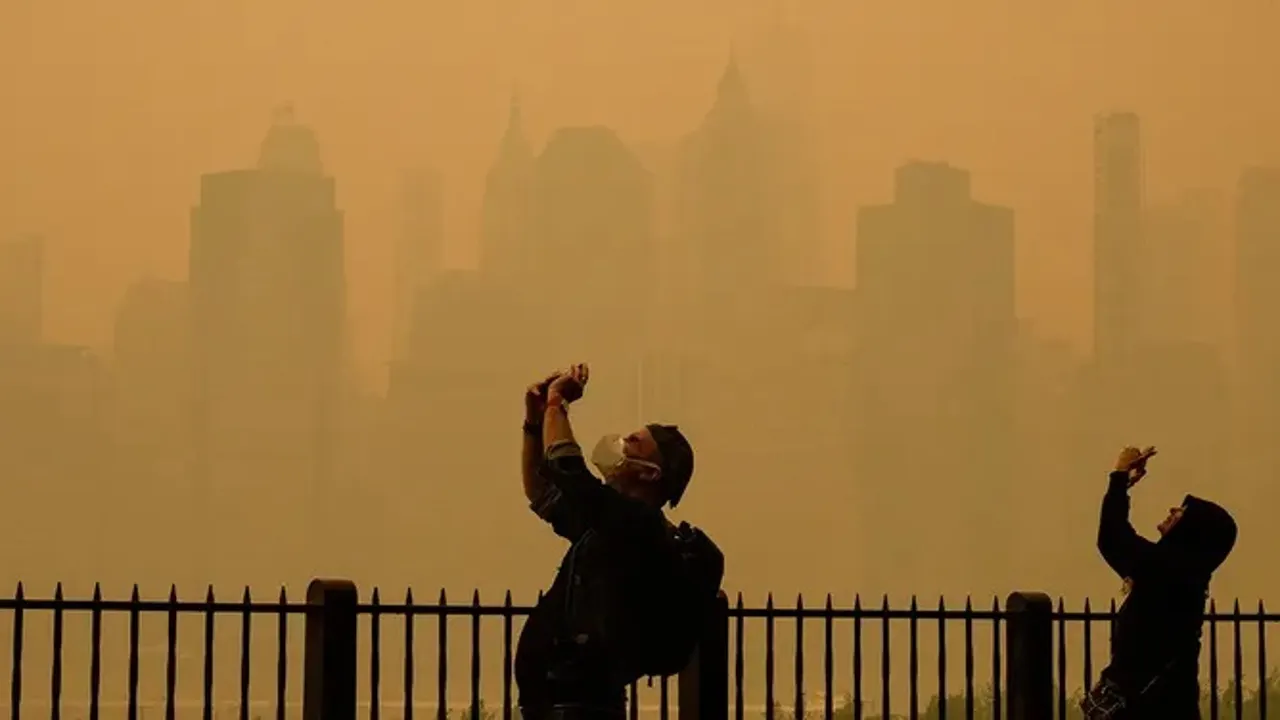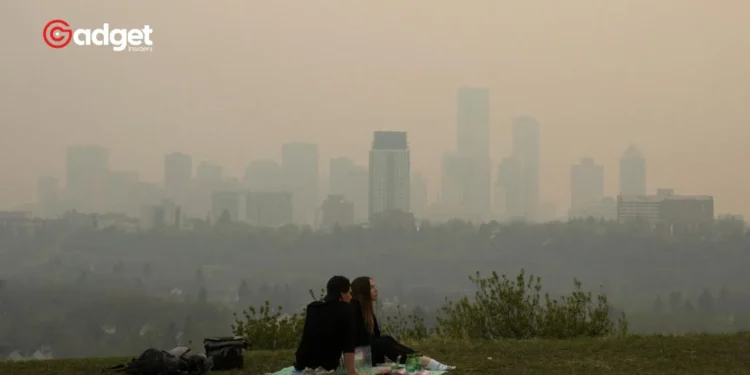Minnesota experienced its first air quality alert of 2024 as smoke from Canadian wildfires drifted southward, casting a hazy pall over the state. This significant event has raised concerns about the impact of wildfires on air quality and public health.

Hazy Skies in Bemidji
On May 12, 2024, Bemidji residents woke up to skies shrouded in a smoky haze. Sean Bielejeski captured the eerie scene, which quickly spread across social media, highlighting the extent of the smoke’s reach. “The air quality is significantly affected,” noted Bielejeski. “You can see the haze hanging in the air, and it’s definitely noticeable when you step outside.”

Impact of Canadian Wildfires
The wildfires raging in Canada have been sending plumes of smoke southward, impacting not only Minnesota but also other states in the Midwest. These wildfires, intensified by dry conditions and high winds, have become a regular occurrence, significantly affecting air quality across borders.
Health Concerns and Precautions
Health officials have advised residents to take precautions, especially those with respiratory issues. The fine particulate matter in the smoke can penetrate deep into the lungs, exacerbating conditions such as asthma and bronchitis. “We urge everyone to stay indoors as much as possible,” advised a representative from the Minnesota Pollution Control Agency. “If you need to go outside, wearing masks designed to filter fine particles can help reduce exposure.”
Monitoring and Alerts
Minnesota’s air quality is continuously monitored, and alerts are issued when pollution levels reach unhealthy thresholds. These alerts are crucial for informing the public and helping them take necessary precautions to protect their health.
With over 100 active wildfires burning in Canada, wildfire smoke has drifted across the border into the U.S., prompting Minnesota officials to issue the state's first air quality alert of 2024 on Sunday. https://t.co/5lgUeFLX7F
— ABC News (@ABC) May 13, 2024
Environmental Implications
The increasing frequency of wildfires and subsequent air quality alerts highlight the broader environmental issues at play. Climate change, with its contribution to prolonged dry spells and extreme weather conditions, is a significant factor in the rise of such wildfires.
“We are seeing a clear pattern,” explained a climatologist from the University of Minnesota. “The link between climate change and the intensity and frequency of wildfires is undeniable.”
Looking Ahead
As Minnesota braces for more smoke-filled days, the importance of addressing climate change and improving air quality monitoring systems becomes ever more pressing. Public awareness and preparedness are key to mitigating the health impacts of such environmental challenges.
“We need to be proactive in our approach,” emphasized the climatologist. “Better forest management practices, along with robust climate action, are essential in reducing the occurrence and impact of these wildfires.”

Minnesota’s Wildfire Smoke Alert: Urgent Action Needed
Minnesota’s first air quality alert of 2024 serves as a stark reminder of the far-reaching effects of wildfires. As smoke from Canadian fires blankets the state, the need for vigilant monitoring and proactive measures to safeguard public health and the environment has never been more evident.
By staying informed and taking appropriate precautions, residents can navigate these smoky days more safely. And as the world grapples with the challenges posed by climate change, events like these underscore the urgent need for collective action and sustainable solutions










